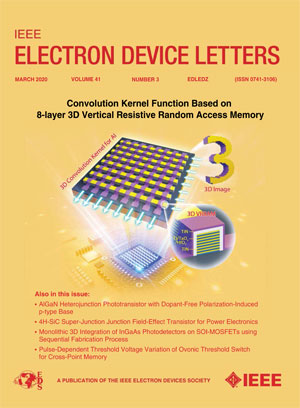TCAD Study of Giant Negative Differential Resistance in Nanoscale Ferroelectric Field-Effect Transistors
IF 4.1
2区 工程技术
Q2 ENGINEERING, ELECTRICAL & ELECTRONIC
引用次数: 0
Abstract
Semiconductor devices that exhibit a negative differential resistance (NDR) characteristic have long been sought after due to their promise of enabling more compact and/or more efficient integrated circuits compared to implementations using only complementary metal-oxide-semiconductor (CMOS) field-effect transistors (FETs). A significant challenge for the development of NDR devices is the need for them to be compatible with established integrated circuit (IC) manufacturing processes while meeting the stringent performance and power requirements of modern IC designs. Ferroelectric FETs (FeFETs) based on CMOS-compatible, hafnia-based ferroelectric gate stack materials have been investigated broadly in the past decade for potential uses in nonvolatile memory, steeply switching logic devices, and neuromorphic computing. In this work a novel FeFET designed to achieve giant NDR behavior is investigated via TCAD simulation, and is projected to achieve peak current above 100求助全文
约1分钟内获得全文
求助全文
来源期刊

IEEE Electron Device Letters
工程技术-工程:电子与电气
CiteScore
8.20
自引率
10.20%
发文量
551
审稿时长
1.4 months
期刊介绍:
IEEE Electron Device Letters publishes original and significant contributions relating to the theory, modeling, design, performance and reliability of electron and ion integrated circuit devices and interconnects, involving insulators, metals, organic materials, micro-plasmas, semiconductors, quantum-effect structures, vacuum devices, and emerging materials with applications in bioelectronics, biomedical electronics, computation, communications, displays, microelectromechanics, imaging, micro-actuators, nanoelectronics, optoelectronics, photovoltaics, power ICs and micro-sensors.
 求助内容:
求助内容: 应助结果提醒方式:
应助结果提醒方式:


